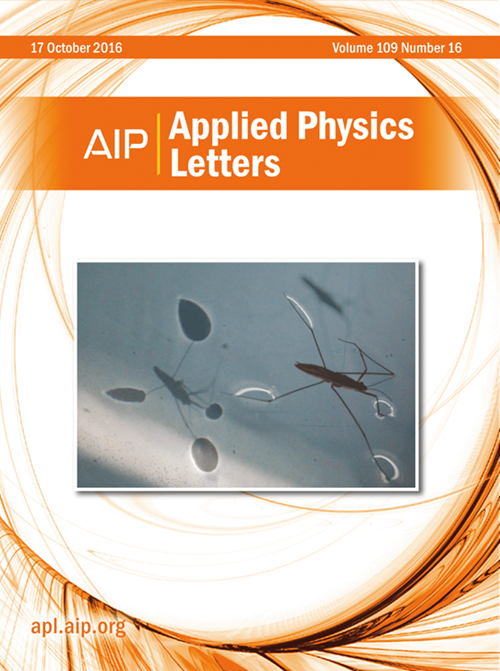Giant correlation, many body and exciton effects in Janus ferrovalley material H-FeClBr
IF 3.5
2区 物理与天体物理
Q2 PHYSICS, APPLIED
引用次数: 0
Abstract
The family of transition metal dichlorides are recently found to be ferrovalley materials, exhibiting desirable spontaneous valley polarization that is a key to practical applications. In this work, Janus monolayer H-FeClBr is investigated as a case study by performing first-principles calculations. We focus on the giant correlation and many-body and exciton effects that will essentially modulate the electronic, valleytronic, and optical properties. The H-FeClBr presents strong ferromagnetism and spin–orbit coupling, giving rise to large spontaneous valley polarization. Due to the enormous electron correlation of the localized d electrons of the Fe atoms, the energy gap calculated using Hubbard U and hybrid functional HSE06 is extraordinarily widened by about seven times with respect to the Perdew–Burke–Ernzerhof (PBE) counterpart. As a result, the orbitals in valley bands are exchanged, the sign of the valley Berry curvatures is switched, and the valley polarization is reversed. The GW calculations further enhance the gap significantly to about 4 eV, which is close to ten times that of the PBE gap and indicative of very strong many-body effects. The exciton spectrum obtained by solving the Bethe–Salpeter equations reveals colossal electron–hole interaction, giving rise to a giant exciton binding energies of ∼1.54 eV. Corresponding to the optical excitation in the two inequivalent valleys with unequal gaps, there are two split exciton peaks, as opposed to the A and B exciton peaks in MoS2 spectrum, which correspond to the optical transitions in the same valley.杰纳斯铁谷材料 H-FeClBr 中的巨相关、多体和激子效应
本文章由计算机程序翻译,如有差异,请以英文原文为准。
求助全文
约1分钟内获得全文
求助全文
来源期刊

Applied Physics Letters
物理-物理:应用
CiteScore
6.40
自引率
10.00%
发文量
1821
审稿时长
1.6 months
期刊介绍:
Applied Physics Letters (APL) features concise, up-to-date reports on significant new findings in applied physics. Emphasizing rapid dissemination of key data and new physical insights, APL offers prompt publication of new experimental and theoretical papers reporting applications of physics phenomena to all branches of science, engineering, and modern technology.
In addition to regular articles, the journal also publishes invited Fast Track, Perspectives, and in-depth Editorials which report on cutting-edge areas in applied physics.
APL Perspectives are forward-looking invited letters which highlight recent developments or discoveries. Emphasis is placed on very recent developments, potentially disruptive technologies, open questions and possible solutions. They also include a mini-roadmap detailing where the community should direct efforts in order for the phenomena to be viable for application and the challenges associated with meeting that performance threshold. Perspectives are characterized by personal viewpoints and opinions of recognized experts in the field.
Fast Track articles are invited original research articles that report results that are particularly novel and important or provide a significant advancement in an emerging field. Because of the urgency and scientific importance of the work, the peer review process is accelerated. If, during the review process, it becomes apparent that the paper does not meet the Fast Track criterion, it is returned to a normal track.
 求助内容:
求助内容: 应助结果提醒方式:
应助结果提醒方式:


